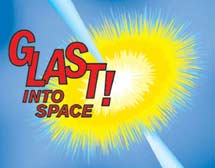

Tuesday – March 14, 2006
 |
 |
|
Tuesday – March 14, 2006 |
|
A Glimpse into the Kavli BuildingThis Friday, when SLAC's Fred Kavli Building first opens its doors, visitors will get a first glimpse of SLAC's newest meeting space: the Kavli auditorium. They might be in for a bit of a surprise. With black walls and hanging spotlights, the Kavli auditorium looks a bit like the interior of a nightclub. It also has the most up-to-date audio and visual equipment on the market. Feast your eyes on the new auditorium this Friday from 3:00 - 4:30 pm at the Fred Kavli Building dedication. |
||||||||||||||||||||||||||
|
|
||||||||||||||||||||||||||

Local Dispatch Answers Cell Phone 911 CallsAt SLAC, we all know to dial 9-911 from any lab phone in the case of an emergency. But what if you’re away from your desk at that critical moment? If you use your cell phone, who will receive the call? In the past, this used to be the California Highway Patrol in Vallejo, but this is no longer the case. Due to the problems of all cell phone 911 calls going to the same central dispatch service, cell phone providers have started to change their routing practices. SLAC is within a zone that now has our 911 calls routed locally. Whenever your phone (or other wireless device) is turned on, it sends out a periodic signal to the nearest radio tower or cell site so that the network will know your location. This is a normal part of wireless service so they can route incoming communication and properly bill for the service. The new 911-routing practice uses this information to send 911 calls to local dispatch centers. Because SLAC is on the border between Palo Alto and Menlo Park, 911 calls may go to either dispatch center depending on where they are made on SLAC’s site. Since they are familiar with SLAC, Palo Alto and Menlo Park dispatch centers will provide fast and accurate responses to your call. |
GLAST into Space Roughly once a day, the universe is rocked by mighty explosions. We don't fully understand what causes the explosions, but we can detect the results: brief, intense bursts of gamma rays, the most energetic photons in the universe. The bursts can show up at any time, in any part of the sky. Soon a powerful new observatory will be orbiting the Earth, capturing gamma rays that come from bursts and various other sources. The Gamma-ray Large Area Space Telescope (GLAST) will explore the high-energy frontier in space to help solve the mysteries of dark matter, supermassive black holes, and the evolution of stars. Read more in symmetry... LCLS Pre-Bidding ConferenceReady, set, go! The LCLS project is gearing up for a pre-bidding conference on March 15. The conference marks the start of the bidding for LCLS construction projects. A variety of sub-contractors have been invited to the meeting including mechanical and electrical contractors, tunnelers and plumbers. At the conference, the contractors will be briefed on how to do business at SLAC. Presentations will address topics including safety issues, work management and payment procedures. After the conference, there will be a tour of SLAC and the future site of the LCLS. Then, the sub-contractors will prepare their bids, submit them for evaluation to the LCLS project team. "It's an exciting time here at SLAC and there's a lot of excitement to begin the construction phase of the project," said Mark Reichanadter, chief engineer of the LCLS project. |
Events (see all | submit)
Announcements
|
||||||||||||||||||||||||
| | ||||||||||||||||||||||||||
What's Cookin' at the Linear Cafe (see weekly menu)
|
||||||||||||||||||||||||||
|
|
||||||||||||||||||||||||||
 <%
Response.AddHeader "Last-modified", getArticleDate()
'Response.AddHeader "Last-modified","Mon, 01 Sep 1997 01:03:33 GMT"
'Monday, December 06, 2010
%>
<%
Response.AddHeader "Last-modified", getArticleDate()
'Response.AddHeader "Last-modified","Mon, 01 Sep 1997 01:03:33 GMT"
'Monday, December 06, 2010
%>View online at http://today.slac.stanford.edu/ |
||||||||||||||||||||||||||